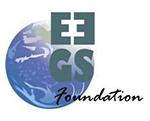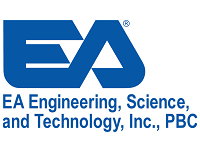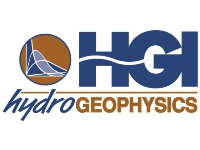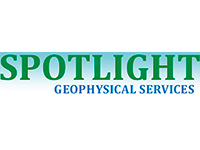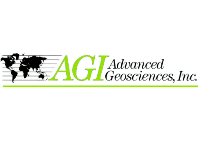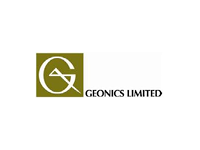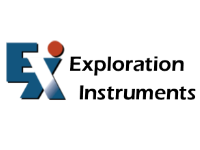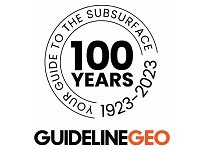- Home
- About Us
- GAINS
- News/TAG Webinars
- Membership
- Annual Meeting/SAGEEP
- SAGEEP 2026
- SAGEEP 2025
- SAGEEP 2025-Munitions Response Meeting Abstracts/Sessions
- SAGEEP 2025-MRM Exhibiting/Sponsorship Opportunities
- SAGEEP 2025-MRM Accommodations
- SAGEEP 2025-MRM Registration Information
- SAGEEP 2025-MRM Program
- SAGEEP 2025-Munitions Response Meeting Short Courses
- SAGEEP 2025/MRM Luncheons/Conference Events/Activities
- SAGEEP 2024
- SAGEEP 2023
- SAGEEP 2022
- SAGEEP 2021
- SAGEEP 2020 Exhibiting/Sponsorship
- SAGEEP-2019
- SAGEEP 2019 Exhibiting/Sponsorship
- SAGEEP 2018
- SAGEEP 2017
- SAGEEP 2016
- SAGEEP 2015
- Proceedings SAGEEP 2024
- Proceedings SAGEEP 2023
- Proceedings SAGEEP 2022
- Proceedings SAGEEP 2018
- Proceedings SAGEEP 2025
- Publications & Merchandise
What is Geophysics?Welcome to the "What is Geophysics" section of the EEGS web site. The purpose of this page is to provide you with a brief introduction to the field of Environmental and Engineering Geophysics, with links to more detailed information contained within various "information repositories". This web page provides a Near Surface Geophysics Glossary (MS Word document), some fundamental definitions, and descriptions of many of the ways in which geophysics is used - ways in which specific methods or techniques are employed to address environmental and engineering problems. It is also a resource for finding answers to the questions listed below.
We hope that the "What is Geophysics" section is will be one of the most dynamically evolving parts of www.eegs.org. We suggest you book-mark this page and check back periodically to see the new information that has been added. What are the commonly used Near Surface Geophysics terms and their definitions?Click here to open a MS Word file to view a Near Surface Geophysics Glossary. If you have corrections, additions, or suggestions regarding the glossary, please contact Paul Wolfe at Wright State University. What is Geophysics? A Question with Many Answers ...
For the purposes of this site, we refer more specifically to the following definitions - these focus on Environmental and Engineering Geophysics:
Both of these definitions have a common component, namely that geophysics represents a class of subsurface investigations that are non-invasive (i.e. that do not require excavation or direct access to the sub-surface). The exceptions are borehole geophysical methods that expand the use of holes already drilled to access the subsurface on a very localized basis. In addition, Definition 1. focuses on the key targets of interest (i.e. geology, geological structure, etc.) - a key consideration in understanding the realm of Environmental and Engineering Geophysics. Definition 2. underscores the near surface aspect (i.e. in contrast to other geophysical applications, such as petroleum or mineral exploration, this type of problem solving deals with shallow depths that are most significant in terms of the lives, work and activities of the earth's human population.) What are the Types of Problems Addressed?
As described above, information on each of these areas will be developed and added to www.eegs.org dynamically - so please check back periodically to see what new information is available. How Do Environmental and Engineering Geophysics Relate to Each Other?
Applications, such as Groundwater and especially contaminant plume mapping, UXO, and Archeology are closely aligned with Environmental Geophysics. Here, the focus is on human health, society and history in contrast to the engineering properties and structures on which Engineering Geophysics focuses. Other applications that focus primarily on the Environmental sub-discipline include pre-development base line studies and re-development studies (i.e. Brownfields) Infrastructure applications have more of an Engineering" component, that is, dealing with the detection and characterization of dangerous roadbed conditions underlying highways, for example. This type of application may involve detecting voids under roadways due to underground (i.e. mining or tunneling) excavations, or characterizing the relative integrity of reinforcing structures in bridges or other transportation structures. Other applications that focus primarily on the Engineering sub-discipline of Environmental and Engineering Geophysics include Dam Safety, and Civil Engineering (including determining the engineering properties of rocks and soils before construction is planned). However, it is not always possible to draw such clear distinctions between each sub-discipline. For instance, there are clearly components of both Environmental and Engineering Geophysics at work in Geohazards studies. What are the Benefits of Geophysics?
What Geophysical Methods are Available?
With this in mind, the methods or techniques most commonly employed by practitioners include:
For a brief introduction to each of these methods, please refer to the following links that have been provided courtesy of several professional consulting groups. (The use of these links does not represent an endorsement of products or services by EEGS or its Board or Directors.) Note that information about geophysical methods will be added in future to this site and you may want to check back periodically for the latest information. How are Geophysical Methods Applied in Practice?The implementation of geophysical methods is a structured process that consists of a number of key steps, including:
After these basic questions have been answered and the project approved, the geophysical work will commence. Typically, Environmental and Engineering Geophysics consists of field surveys conducted along oriented lines (i.e. survey grids) over the desired area of interest. For more information on field surveying, you may want to refer to the links provided above in the "What Geophysical Field Methods are Available" section. How are Data and Information Analyzed and Interpreted?
Now, however, the application of environmental and engineering geophysical surveys is increasingly becoming a "planned" activity that is included in budgeting (for example, in highway construction projects or dam construction). A prerequisite for both of these types of implementations (i.e. crisis-response and planned) is the availability of data that are reliably and accurately interpreted and presented. Typically, data evolve through a "life-cycle" that consists of the following stages:
Ultimately, the objective is to develop an integrated presentation of all available data and information that can be used not only for decision-making but for other things as well, such as establishing time-indexed baseline information. Another increasingly important objective is to ensure that the data and information are archived for future access (i.e. results may be required for reference in future activities such as re-measurements to compare evolution of conditions over time, or for legislative or judicial procedures). What are the Costs of Geophysics?Cost is, of course, a key consideration. Most Environmental and Engineering Geophysical surveys have a cost structure that is similar to that of any licensed professional: an hourly consulting fee plus equipment rental costs. In addition, there are associated costs of mobilization (since most geophysical surveys require acquisition of data in the field), instrumentation amortization, data processing and interpretation, and report writing and presentation. Ultimately, the application of geophysics must be assessed in terms of its projected costs and benefits as indicated above. EEGS professionals are trained to advise in developing cost and benefit assessments. It makes no sense to conduct a geophysical survey if the costs are projected to exceed any possible economic gains, or to exceed the project's operational budget. In general, however, geophysical surveys are almost always substantially less expensive than traditional non-technical means of investigation such as excavation or drilling. Who Can Provide the Data Acquisition, Software and Services Required?Many of the people who are available to assist in addressing Environmental and Engineering problems are members of EEGS. To find out more about who is available to address your specific issues or provide you with more information, you may want to browse our supplier links or our Board of Directors list. When working with an EEGS member, you may want to keep in mind that our role is to:
But, first-and-foremost, our role is to service the groups who require our assistance. This commitment is expressed in our Code of Ethics that states that Environmental and Engineering Geophysicists have a responsibility to:
As you browse this web site, we hope that you will gain more familiarity with the concepts, practices and benefits of Environmental and Engineering Geophysics as well as greater contact with the professional members of our community. We are ready to work with you to address the specific issues that are most important to your community, work and well being. Your Feedback We are always delighted to receive your input about the content at www.eegs.org, and how to improve the site. If you have comments or would like to volunteer, please contact the EEGS business offices at [email protected]. |

